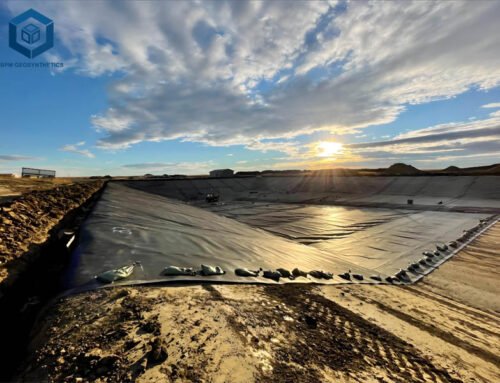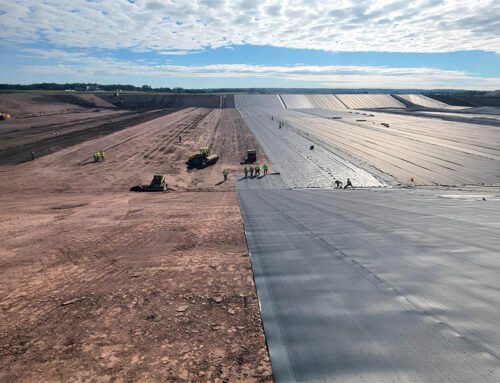HDPE Pond Liner 500 Micron is 0.5mm geomembrane, HDPE pond liner is pond liner made of high density polyethylene, commonly used for pond liner, reservoir, artificial lake, salt pond and other applications. It is puncture resistant, tear resistant and hook resistant. HDPE pond liner is lightweight and easy to transport, so you can move them as needed. Next from the material, thickness, flexibility, UV resistance and other factors, let you have a better understanding of HDPE Pond Liner 500 Micron.BPM Geomembrane is the leading HDPE geomembrane manufacturer and supplier with 14+ years of industrial experiences. We wholesale geomembrane HDPE liner with complete speifications at great factory price.At the same time 500 micron HDPE pond liner from aquaculture, salt pond, artificial lake and other applications.
1. What Is HDPE Pond Liner 500 Micron?
1.1 Material
HDPE Pond Liner 500 Micron, also known as HDPE geomembrane or geomembrane liner, is the low permeability liner made of high grade polyethylene raw material, adding carbon black, antioxidant, anti-aging and UV-resistance component. It is the most widely used geosynthetic membrane which features excellent chemical resistance, outstanding stress crack capacity, lowest permeability and excellent UV resistance.
1.2 Flexibility
Its strength, durability, and longevity make it a solid choice for HDPE Pond Liner 500 Micron. Additionally, its flexibility and environmental friendliness make it a practical and sustainable solution. HDPE pond liners come in a variety of sizes to fit most pond sizes. Their reusability extends their lifespan and allows for multiple uses before replacement. They are also flexible and can conform to the shape of your pond, ensuring a secure fit.
1.3 UV resistant
500 micron HDPE pond liners are UV, puncture, and tear resistant. They provide a waterproof barrier that helps retain water and prevent leaks. Hdpe pond liners are also flexible, which makes them easier to install and mold to the contours of your pond. This means it can withstand harsh weather conditions, sharp objects, and sunlight exposure without deteriorating. Additionally, HDPE Pond Liner 500 Micron is flexible and can conform to the shape and contours of your pond, making installation easier and ensuring a snug fit. Another benefit of Hdpe pond liners is their long lifespan. They can last up to 20 years or more, depending on the quality and thickness of the liner. This reduces the need for frequent replacement and maintenance, saving you time and money in the long run. Hdpe pond liners are also environmentally friendly.
1.4 Tear resistance and corrosion resistance
HDPE Pond Liner 500 Micron is tear-resistant, so they are less likely to be damaged during installation or use. HDPE pond liners are corrosion-resistant, so they can be used in ponds containing chemicals or other corrosive substances. At the same time, 500 micron HDPE pond liners do not contain elements such as lead, mercury, etc. Therefore, they are safe for both fish and plants, and HDPE pond liners can be used in aquaculture.
1.5 Anti-seepage
500 micron HDPE pond liner is as a waterproof barrier that effectively prevents water from leaking into the soil and protects the pond from harmful elements such as chemicals, bacteria, and UV rays.
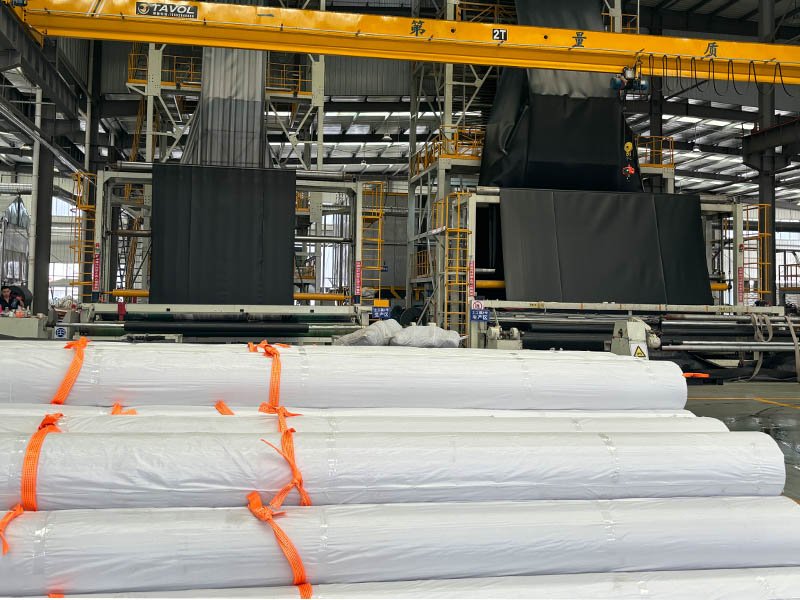
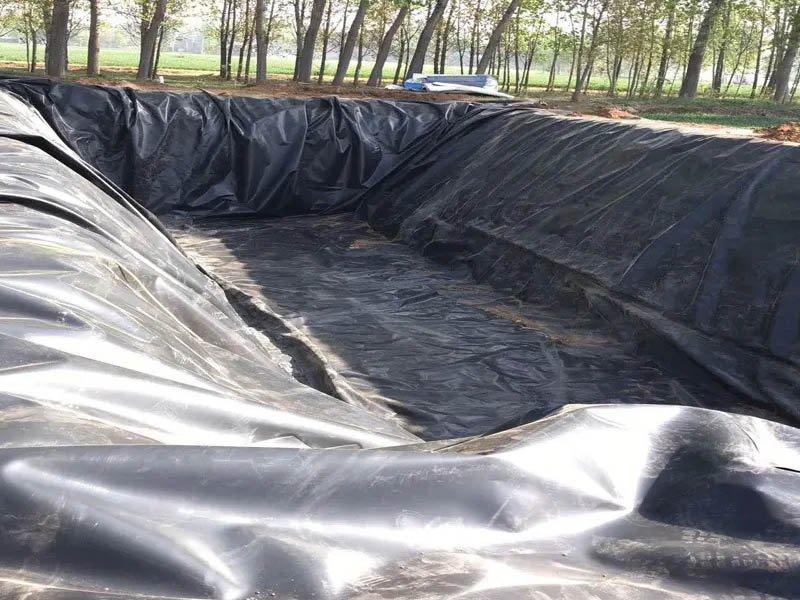
2. What Are Applications Of HDPE Pond Liner 500 Micron?
HDPE (High-Density Polyethylene) pond liners with a thickness of 500 microns are commonly used in various applications due to their durability, impermeability, and chemical resistance. Here are some typical applications of HDPE pond liners with a thickness of 500 microns:
2.1 Pond Liners:
- HDPE pond liners are widely used for lining ponds, lakes, reservoirs, and water features to prevent seepage and water loss. The 500-micron thickness provides a strong barrier against leaks and ensures long-term water containment.
2.2 Aquaculture Ponds:
- In aquaculture, HDPE pond liners are utilized to create fish ponds, shrimp ponds, and other aquatic enclosures. The liners help maintain water levels and quality, providing a stable environment for aquatic life.
2.3 Landfill Liners:
- HDPE pond liners are employed as landfill liners to contain and isolate waste materials, preventing leachate contamination of the surrounding soil and groundwater. The 500-micron thickness offers enhanced protection against chemical penetration.
2.4 Wastewater Treatment:
- HDPE pond liners are used in wastewater treatment facilities to line containment ponds and lagoons, ensuring the proper containment of treated or contaminated water.
2.5 Irrigation Reservoirs:
- HDPE pond liners are installed in irrigation reservoirs to store water for agricultural irrigation purposes. The liners prevent water seepage, maintaining water levels for efficient irrigation practices.
2.6 Stormwater Management:
- HDPE pond liners can be used in stormwater retention ponds and basins to control and manage stormwater runoff, reducing the risk of flooding and erosion.
2.7 Decorative Ponds and Water Features:
- HDPE pond liners are utilized in decorative ponds, fountains, and water gardens to create visually appealing water features while ensuring water containment.
2.8 Golf Course Water Hazards:
- HDPE pond liners are commonly used in golf course water hazards to maintain water levels and prevent seepage, enhancing the aesthetics and playability of the course.
2.9 Industrial Applications:
- HDPE pond liners with a 500-micron thickness are suitable for various industrial applications, such as lining containment areas for chemicals, oils, and other hazardous substances.
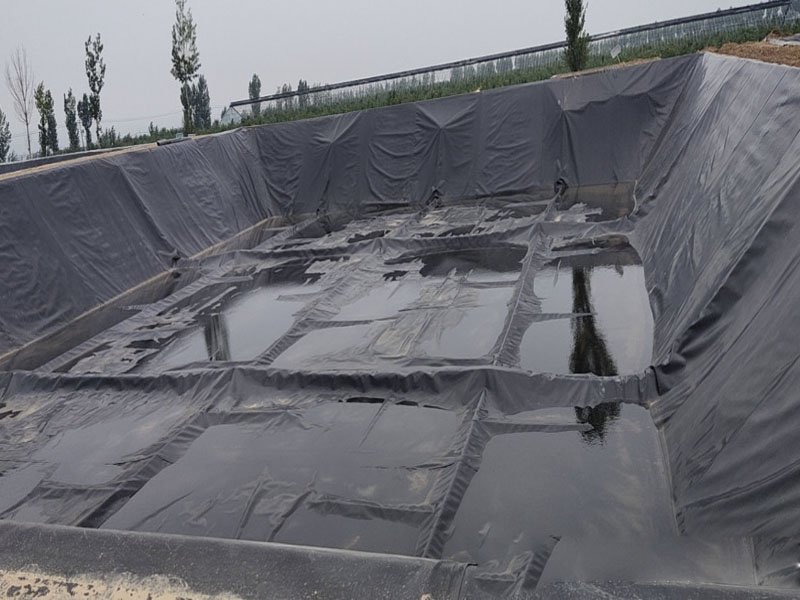
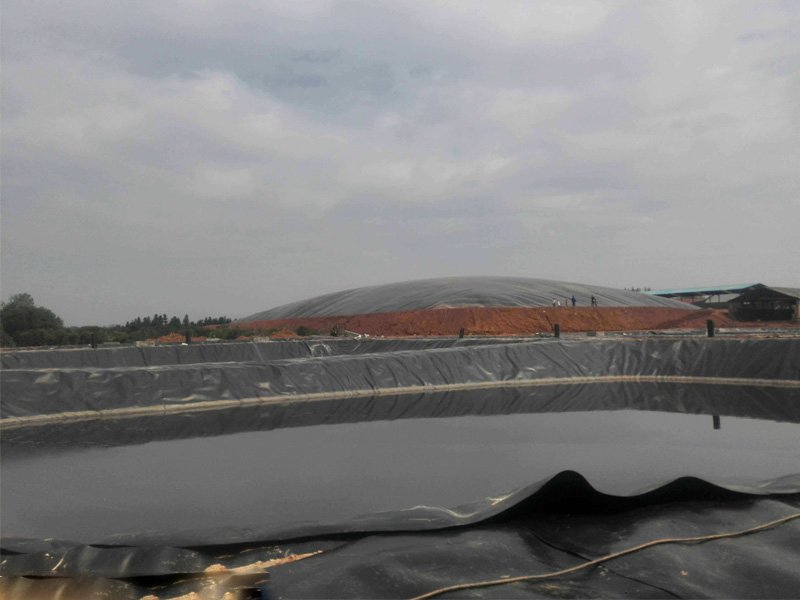
3. How To Use And Install HDPE Pond Liner 500 Micron?
Installing an HDPE (High-Density Polyethylene) pond liner, especially one that is 500 microns thick, requires careful planning and execution to ensure its effectiveness in a fish pond. Here is a general guide on how to use and install a 500-micron HDPE pond liner:
3.1 Materials and Tools Needed:
- HDPE pond liner (500 microns thickness)
- Protective underlay (geotextile fabric)
- Anchor trenching tools (if needed)
- Seaming tools (if multiple liners need to be joined)
- Water source for filling the pond
3.2 Preparation Phase:
- Site Selection: Actively choose a suitable site that is flat and clear of any sharp objects to prevent damage to the liner.
- Excavation: Dig out the pond to the desired dimensions, ensuring smooth slopes for the liner.
- Base Preparation: Meticulously remove sharp items from the excavated area, level the base, and compact the soil for a stable foundation.
3.3 Installation Phase:
- Unrolling the Liner: Carefully lay out the HDPE liner without stretching it, positioning it over the prepared soil bed.
- Trimming and Fitting: Use a knife or scissors to cut the liner, allowing some extra material around the edges to accommodate adjustments.
- Anchoring the Edges: Secure the edges of the liner with rocks, stakes, or sandbags to keep it in place during the filling process.
3.4 Testing and Finalization:
- Leak Testing: Partially fill the pond with water to check for leaks or damage, addressing any issues before proceeding.
- Filling the Pond: If no leaks are found, continue filling the pond while monitoring the liner for proper placement.
- Finishing Touches: Add decorative elements such as stones or plants around the pond to enhance its appearance and conceal the liner edges.
3.5 Maintenance:
- Regular Cleaning: Periodically remove debris and clean the liner to prevent the growth of algae and preserve the integrity of the pond.
By adhering to these steps and taking care not to damage the liner during installation, you can successfully install a HDPE Pond Liner 500 Micron. Always refer to the manufacturer’s instructions for specific guidelines and best practices related to the product you are using.
4. Summary
500 micron HDPE pond liner is an excellent waterproof material, widely used in fish ponds, shrimp ponds, aquaculture projects, artificial lakes, reservoirs and salt ponds. HDPE Pond Liner 500 Micron plays an important role in anti-seepage in the above applications. We BPM use 100% virgin imported Saudi Arabian materials through the world’s most advanced fully automated geomembrane production equipment and three-layer co-extrusion blow molding technology. At the same time, the geomembrane we produce has been approved by the IGS geosynthetics Association.
If you have any questions or concerns, please contact us.


